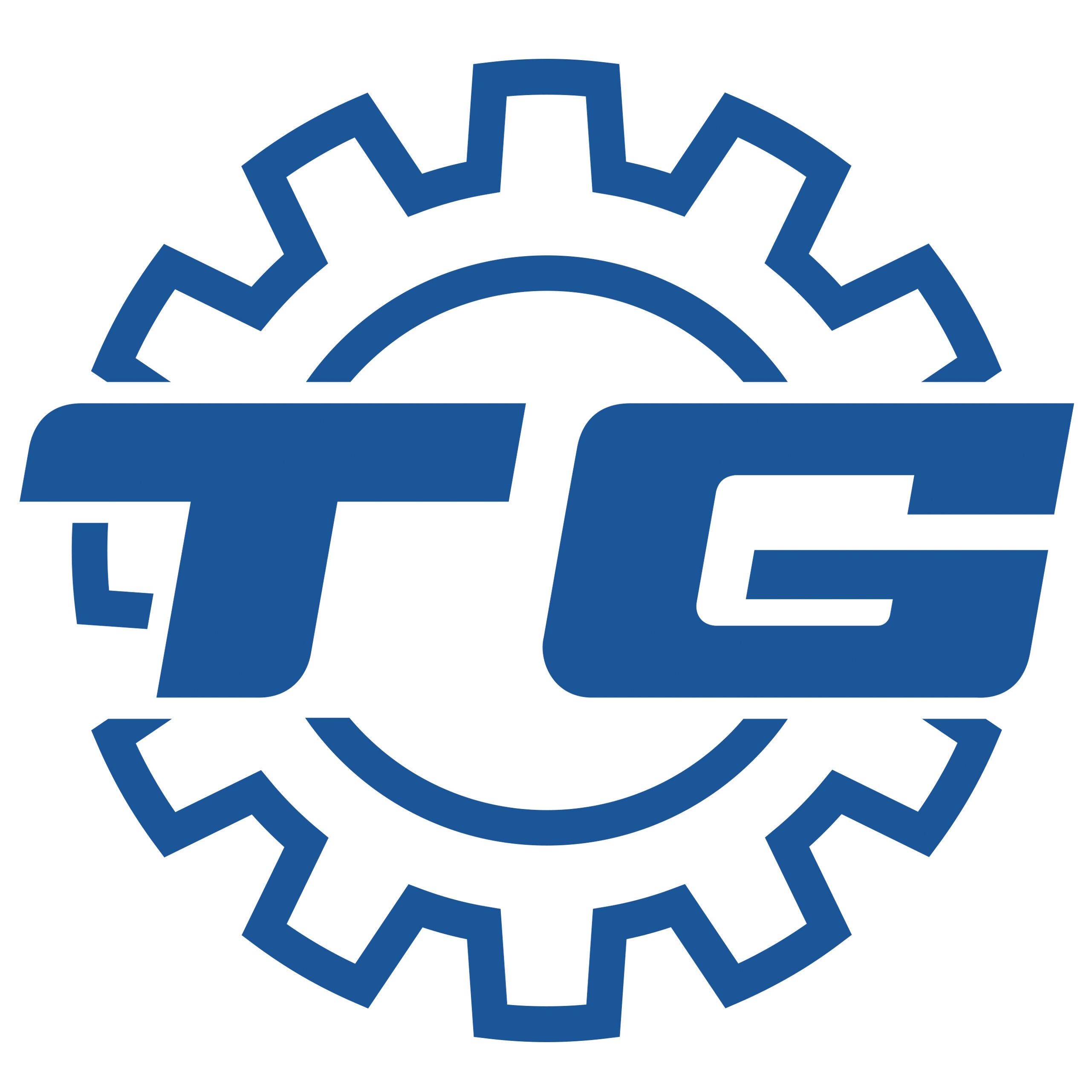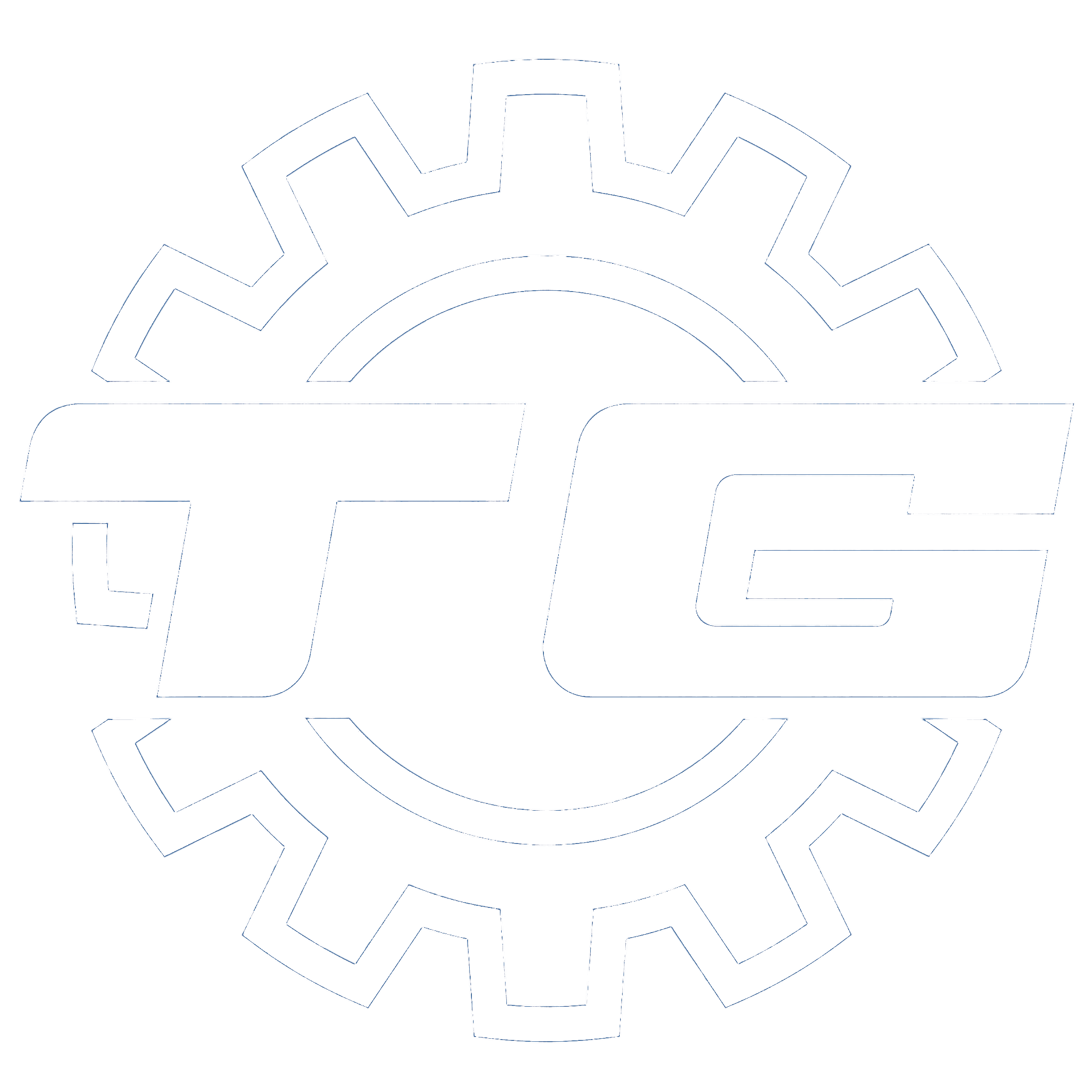Pentingnya Pemeliharaan Mata Potong Frais
Menjaga pahat frais dalam kondisi baik membuat semua perbedaan dalam mendapatkan hasil yang baik dari pekerjaan pemesinan. Ketika alat-alat tetap tajam dan berfungsi dengan baik, segalanya berjalan lebih lancar selama proses produksi dan komponen dihasilkan persis seperti yang direncanakan. Namun jika perawatan rutin diabaikan, alat-alat potong tersebut tidak akan bertahan sepanjang seharusnya. Perusahaan akhirnya menghabiskan jauh lebih banyak uang untuk mengganti peralatan yang sudah aus, padahal cukup melakukan pemeriksaan berkala. Frais end mill yang tidak dirawat membutuhkan tenaga tambahan untuk menjalankan tugasnya, yang menyebabkan alat tersebut lebih cepat aus. Kami telah melihat bengkel-bengkel kehilangan ribuan dolar karena tidak menginvestasikan waktu dalam praktik perawatan dasar yang sebenarnya bisa memperpanjang usia alat hingga berbulan-bulan.
Pemeliharaan rutin menjaga kualitas produksi tetap stabil sekaligus mengurangi cacat pada komponen yang diproses. Saat end mill dalam kondisi baik, alat ini bekerja lebih lancar dan membuat kesalahan lebih sedikit selama proses pemesinan, yang berarti hasil yang lebih baik secara keseluruhan. Memastikan alat-alat ini terpelihara dengan baik juga memberikan dampak besar di lantai pabrik. Bengkel dapat menghasilkan workpiece berkualitas tanpa gangguan, dan konsistensi ini secara langsung menciptakan kepuasan pelanggan yang mendapatkan produk sesuai harapan pRODUK .
Keausan Terlihat dan Degradasi Tepi
Mengetahui hal-hal yang perlu diperhatikan dalam memeriksa keausan yang terlihat dan kerusakan pada tepi cutter milling membuat perbedaan besar dalam menjaga alat tetap bekerja dengan baik dan efisien. Ada beberapa tanda yang menunjukkan bahwa alat mungkin sudah mendekati akhir masa pakainya dan memerlukan tindakan tertentu. Tepi cutter yang terkelupas, tajam yang tumpul, atau permukaan yang tidak rata merupakan masalah umum yang muncul selama pemeriksaan rutin. Dengan melakukan inspeksi secara teratur menggunakan peralatan yang tepat, operator dapat mendeteksi masalah-masalah ini sebelum menjadi lebih buruk. Pendekatan proaktif ini mengurangi berhentinya mesin secara tak terduga dan membantu menjaga produk akhir tetap memenuhi standar kualitas selama jalannya produksi.
Mengidentifikasi Flank Wear dan Cratering
Keausan sisi dan kawah merupakan beberapa masalah yang paling sering terjadi pada cutter frais selama operasi berlangsung. Saat memeriksa tepi pemotong dan menemukan tanda-tanda keausan sisi, biasanya ini berarti alat tersebut sudah tidak bekerja secara optimal lagi. Aksi pemotongan akan semakin memburuk seiring perkembangan keausan. Kawah terjadi secara berbeda karena melibatkan hilangnya material secara bertahap di sepanjang tepi pemotong itu sendiri, yang menghasilkan permukaan benda kerja yang kurang baik. Operator sebaiknya secara rutin memeriksa alat-alat mereka menggunakan kaca pembesar atau mikroskop untuk mendeteksi masalah-masalah ini sejak dini. Deteksi awal membantu mencegah berhentinya mesin secara tak terduga dan menjaga kelancaran produksi tanpa gangguan yang berbiaya mahal.
Mengenali Flute yang Tercabik atau Patah
Ketika flute pada end mill mengalami chip atau patah, hal itu benar-benar mengganggu kinerja alat tersebut. Flute yang rusak sering meninggalkan hasil permukaan bagian yang buruk dan menyebabkan mesin bergetar lebih dari biasanya, yang pada akhirnya merusak kualitas produk secara keseluruhan. Solusinya? Perhatikan kondisi flute sepanjang masa pakainya agar dapat menggantinya sebelum kerusakan semakin parah, baik sebagian maupun seluruhnya bila diperlukan. Menurut beberapa data industri, alat yang sudah aus menyebabkan sekitar 30% dari semua penghentian produksi. Jadi, merawat kondisi flute sangat masuk akal jika kita ingin mengurangi gangguan dan meningkatkan kelancaran proses di lini perakitan. Pemeriksaan rutin tidak hanya mencegah masalah yang lebih besar di kemudian hari, tetapi juga memperpanjang umur alat potong dan membuat operasional berjalan jauh lebih lancar secara keseluruhan.
Kualitas Permukaan Mesin yang Buruk
Tatal dan Hasil Akhir yang Kasar sebagai Tanda Peringatan
Ketika gurdi mulai muncul pada permukaan yang diproses, biasanya itu menandakan bahwa tepi alat frais mulai tumpul atau mengalami kerusakan. Hal ini jelas memengaruhi kinerja alat dan menghasilkan permukaan akhir yang buruk pada produk yang dibuat. Mengenali masalah ini sejak dini sangat penting karena hasil akhir yang kasar merusak baik tampilan maupun fungsi produk dalam aplikasi nyata. Pemeriksaan rutin terhadap permukaan tersebut memberi gambaran kondisi sebenarnya dari alat pemotong yang digunakan. Berdasarkan pengalaman saya bekerja di lantai pabrik, memperhatikan kekasaran permukaan membuat perbedaan besar dalam menyusun jadwal pemeliharaan dan menghindari keterlambatan produksi yang mahal di masa depan.
Analisis Pembentukan Serpihan yang Tidak Konsisten
Mengamati terbentuknya serpihan selama proses pemesinan memberikan indikasi yang baik tentang seberapa baik alat pemotong bekerja. Ketika serpihan yang dihasilkan berbentuk teratur dan dapat diprediksi, biasanya hal ini menunjukkan bahwa segala sesuatunya berjalan sesuai rencana. Namun jika serpihan mulai tampak tidak teratur atau terlepas dengan cara yang berbeda dari biasanya, ini sering menunjukkan adanya alat pemotong yang sudah aus atau rusak, yang akan mengurangi efisiensi pemesinan. Bengkel biasanya menggabungkan pemeriksaan visual secara berkala dengan sistem pemantauan otomatis untuk hasil terbaik. Memeriksa serpihan secara rutin membantu mengetahui kapan tepatnya alat perlu diasah atau diganti sebelum menyebabkan masalah yang lebih besar. Kebanyakan produsen menemukan bahwa memperhatikan detail-detail ini membantu menjaga kelancaran produksi dan bahkan meningkatkan output dalam jangka panjang, tanpa adanya gangguan tak terduga yang menyebabkan kerugian finansial dan keterlambatan pesanan.
Gaya Pemotongan dan Getaran yang Meningkat
Pemantauan Lonjakan Konsumsi Daya
Melacak seberapa besar daya yang digunakan oleh alat pemotong memainkan peran penting dalam menilai kinerjanya. Ketika terjadi perubahan mendadak dalam penggunaan daya, biasanya hal ini menandakan ada yang tidak beres—mungkin ada gesekan tambahan yang terjadi atau alat itu sendiri mulai aus. Operator yang memperhatikan lonjakan daya selama proses pemotongan berlangsung seringkali dapat mengetahui kapan alat perlu diganti sebelum benar-benar gagal, sehingga menghindari henti produksi yang menjengkelkan. Menetapkan tingkat konsumsi daya standar untuk setiap alat secara individual membuat hal ini menjadi mungkin. Setelah baseline tersebut ditetapkan, siapa pun yang memantau peralatan dapat mendeteksi masalah lebih awal. Hasilnya? Alat pemotong tetap dalam kondisi lebih baik untuk jangka waktu lebih lama, dan keseluruhan operasi pemesinan berjalan lebih lancar dan cepat seiring waktu.
Mengenali Getaran Mesin yang Berbahaya
Gemetar mesin (machine chatter) terjadi cukup sering di lantai produksi dan sangat mengganggu kualitas akhir permukaan komponen yang diproduksi. Biasanya hal ini disebabkan oleh alat yang membutuhkan perawatan atau praktik pengaturan yang buruk. Yang baik berita ? Ada sesuatu yang disebut teknologi analisis getaran yang memberikan informasi aktual dan berguna kepada produsen tentang apa yang salah pada mesin mereka. Para profesional industri yang telah berpengalaman bertahun-tahun mengatakan bahwa memahami penyebab terjadinya getaran membuat perbedaan besar dalam kinerja keseluruhan mesin. Ketika bengkel berhasil mengidentifikasi getaran yang mengganggu dan memperbaikinya dengan benar, hasilnya adalah peralatan yang bekerja lebih baik dan komponen yang tampil jauh lebih rapi setelah keluar dari lini produksi.
Indikator Tegangan Termal
Mendeteksi Panas Berlebihan
Terlalu banyak panas selama proses pemesinan menyebabkan masalah serius, mulai dari patahnya alat hingga perubahan perilaku material. Memantau suhu alat sangat penting jika kita ingin menghindari semua masalah ini. Banyak bengkel saat ini menggunakan kamera inframerah untuk memeriksa kondisi panas saat mesin sedang berjalan. Kamera tersebut memberikan gambar real-time tentang di mana titik panas terbentuk, yang membantu mendeteksi masalah sebelum menyebabkan kerusakan. Keuntungan tambahannya adalah alat frais bertahan lebih lama ketika suhunya tetap berada dalam batas aman. Penelitian menunjukkan bahwa tegangan termal mempercepat keausan alat potong, terutama ketika mesin berjalan pada kecepatan maksimum. Karena itulah banyak produsen saat ini menginvestasikan sistem pemantauan termal yang andal.
Perubahan Warna dan Deformasi Termal
Ketika alat mulai menunjukkan perubahan warna pada permukaannya, biasanya itu berarti alat tersebut terlalu panas, yang memengaruhi kinerjanya seiring waktu. Memeriksa perubahan warna secara berkala membantu mendeteksi masalah sebelum panas berlebih menyebabkan kerusakan nyata. Perhatikan juga adanya pelengkungan atau pembengkokan — itu adalah tanda peringatan bahwa alat bisa saja patah secara tiba-tiba saat digunakan, menciptakan situasi berbahaya di bengkel. Bagi siapa pun yang bekerja dengan frais end (milling cutters), memahami bagaimana suhu memengaruhinya bukan hanya penting, tetapi kritis jika kita ingin operasi pemesinan tetap ramah lingkungan dan produktif. Mengambil sikap waspada semacam ini melindungi peralatan mahal sekaligus memastikan produksi tetap berjalan tanpa gangguan atau henti operasi yang tidak perlu.
Ketidaktepatan Dimensi pada Benda Kerja
Pola Melebihi Toleransi
Mendeteksi saat toleransi terus-menerus terlampaui itu penting karena biasanya menunjukkan bahwa alat-alat sedang mengalami keausan dan perlu segera diperbaiki. Alat yang digunakan dalam operasi pemesinan yang secara rutin menghasilkan komponen di luar kisaran ukuran yang dapat diterima mempengaruhi kualitas produk akhir sekaligus menunjukkan adanya masalah pada alat pemotong itu sendiri. Dengan memperhatikan bagaimana masalah toleransi ini muncul seiring waktu, produsen bisa mendapatkan informasi praktis mengenai kondisi sebenarnya dari proses produksinya. Perusahaan yang mencatat pola-pola ini dapat merencanakan lebih baik kapan peralatan harus diservis, sehingga mengurangi waktu henti tak terduga dan memastikan produk tetap memenuhi spesifikasi. Dan jelas, memperhatikan angka-angka ini berarti mengurangi pemborosan uang akibat harus memperbaiki atau mengganti komponen yang cacat di kemudian hari. Hasil pemesinan yang lebih baik berasal dari pengetahuan kapan alat sudah mulai aus sebelum menyebabkan masalah besar.
Teknik Pengukuran Defleksi Alat
Metode pengukuran yang canggih sangat penting dalam memantau defleksi alat secara real time, yang berdampak langsung pada akurasi proses pemesinan. Saat bengkel menggunakan sistem seperti sistem pelurusan laser atau sensor ultrasonik, mereka mendapatkan umpan balik instan mengenai posisi alat sebenarnya dan seberapa besar alat tersebut melengkung selama beroperasi. Pemeriksaan terus-menerus semacam ini membantu menjaga konsistensi hasil pemesinan di antara berbagai komponen. Pemeriksaan rutin terhadap defleksi alat membuat hasil produksi lebih dapat diprediksi dan mengurangi limbah akibat komponen yang tidak memenuhi spesifikasi. Alat yang mampu mempertahankan bentuknya dengan baik sangat penting karena jika tidak, hasil akhir akan memiliki variasi dimensi yang terlalu besar. Bengkel yang memperhatikan masalah defleksi ini cenderung menghasilkan komponen yang lebih rapi dengan dimensi yang sesuai dengan harapan pelanggan, sehingga meningkatkan kepuasan jangka panjang dan menghemat biaya akibat pekerjaan ulang.
Pertanyaan yang Sering Diajukan (FAQ)
Mengapa pemeliharaan rutin terhadap pahat frais penting?
Pemeliharaan rutin membantu menjaga ketelitian dan efisiensi dalam proses pemesinan, memperpanjang umur alat, serta mengurangi biaya operasional dengan menghindari penggantian yang sering.
Bagaimana cara mengidentifikasi keausan pada mata frais (milling cutters)?
Tanda-tanda keausan meliputi kerusakan terlihat pada tepi pemotong, flute yang terkelupas atau patah, serta kualitas permukaan yang menurun. Pemeriksaan rutin menggunakan alat bantu pembesar dapat membantu mendeteksi masalah ini lebih awal.
Apa saja indikator umum stres termal pada mata frais (milling cutters)?
Panas berlebihan dan perubahan warna pada permukaan alat adalah indikator umum, yang menunjukkan bahwa alat sedang mengalami stres termal berlebihan.
Bagaimana pengaruh defleksi alat terhadap kualitas benda kerja?
Defleksi alat dapat menyebabkan ketidaktepatan dimensi pada benda kerja. Penerapan teknik pengukuran canggih memastikan hasil pemesinan yang konsisten dengan meminimalkan defleksi.


